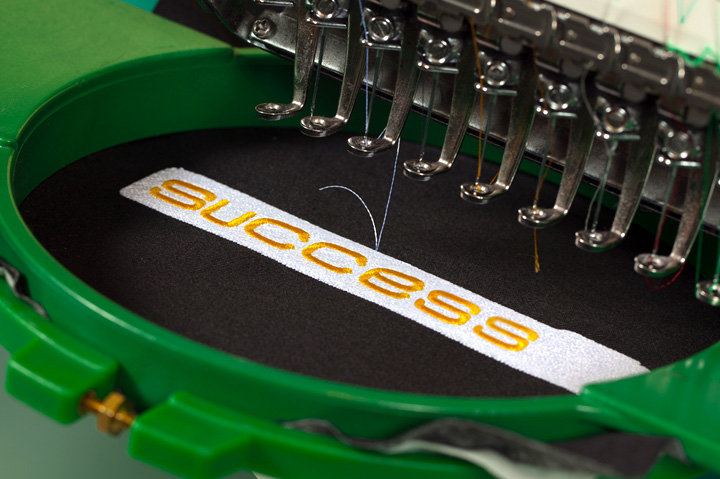July 25, 2022
How to Turn Your Logos Into Embroidery
Embroidered logos can elevate promotional apparel, but it’s important to design for the strengths – and limitations – of the medium.
There’s a reason embroidery consistently ranks among the top choices for logoed apparel: It’s timeless and classic, with a high-end textural look. “I believe thread creates stronger brand impact than print,” says Karen Ria Habib, co-owner of Torrance, CA-based embroidery digitizing firm Quality Punch. “It’s the touch factor – thread can be touched, and people appreciate that.”

Embroidery’s strengths as a decorating medium are many, says Erich Campbell, decorating industry veteran and program manager for the commercial division of embroidery software company BriTon Leap. It’s durable and has superior texture and sheen, but “with its fixed thickness and the physical nature of creating an image with thread, there are some weaknesses,” he adds.
When you’re transforming a client’s logo into embroidery, it’s often necessary to make modifications, both to play to thread’s strengths and sidestep the medium’s weaknesses. Consider that a design that works well on certain promotional products, say a mug or tumbler, will not translate directly to thread without expert tweaking from your digitizing and embroidery partners. “If the logo has been created to fit on a pen, it will need to be recreated larger to work for a left chest or a cap design,” notes Joyce Jagger, The Embroidery Coach.
Here are a few tips to ensure your embroidered logos are top-notch.
1. Keep it simple.
If you try to pack too much detail into a small area, you’re headed for trouble. “Remember, you’re driving a threaded needle through a garment thousands of times, stacking stitches atop and around each other to make an image,” Campbell says. “Though we do it with all the precision possible, there’s a limit to how much we can render in a small area. Make peace with the idea that a digitizer will render the sense of a design, not every line, dot or subtle shift in color.”
2. Avoid gradients.
Smooth gradients, particularly multicolor rainbow gradients, are trendy in logo design these days, but trying to adapt the aesthetic to thread is a fool’s errand. There are cutting-edge technologies that “allow on-machine thread coloring that can create impressive gradients by ‘printing’ the thread as it’s stitched,” but those aren’t widely used yet, Campbell says. Otherwise, digitizers must layer and place solid lines of color next to each other in ratios to fool the eye into seeing a gradient or blend, he says. “It’s a difficult skill for digitizers to learn, and you’re likely not to love the results if your logo deeply depends on smooth rainbow gradients,” Campbell adds.
3. Stay away from small lettering.
An embroidered logo shouldn’t include every single line of text that appears on a company’s business card. Help your client pare artwork down so that only the most crucial information remains. If some small text is still necessary, Jagger recommends keeping letters at least 4 millimeters high; otherwise, the embroiderer will need to use a smaller thread and needle than typical (adding to the overall price). For block lettering, especially if it’s arced, it’s best to use all uppercase letters, she adds.
4. Consider size, placement and material.
Caps and polos remain popular choices, but embroidery isn’t one-size-fits-all. A logo destined for a cap needs to be digitized differently than left-chest embroidery, Jagger says. Plus, different types of fabric and garment styles may necessitate tweaks to your digitized logo file. Another thing to think about is sizing. Most embroiderers charge per stitch, so the bigger your logo, the higher the cost. “Unlike print, the time difference on an embroidery machine is directly linked to the number of stitches and number of colors,” Habib says.
5. Communication is key.
It’s important to educate your client about embroidery’s strengths and weaknesses, but it’s also a good idea to consult with your embroiderer and digitizer to ensure the best quality logo possible. “Even if you don’t avail yourself of the texture, sheen and dimension that thread can provide, you can at least create a guideline for any company you design for that respects the needs of embroidery and ensures a clean-running, legible decoration every time you turn to embroidery,” Campbell says. “A great embroiderer or digitizer will be a partner in helping you understand what’s possible and providing options you can pursue that make the best of the medium while solving your customers’ needs.”
